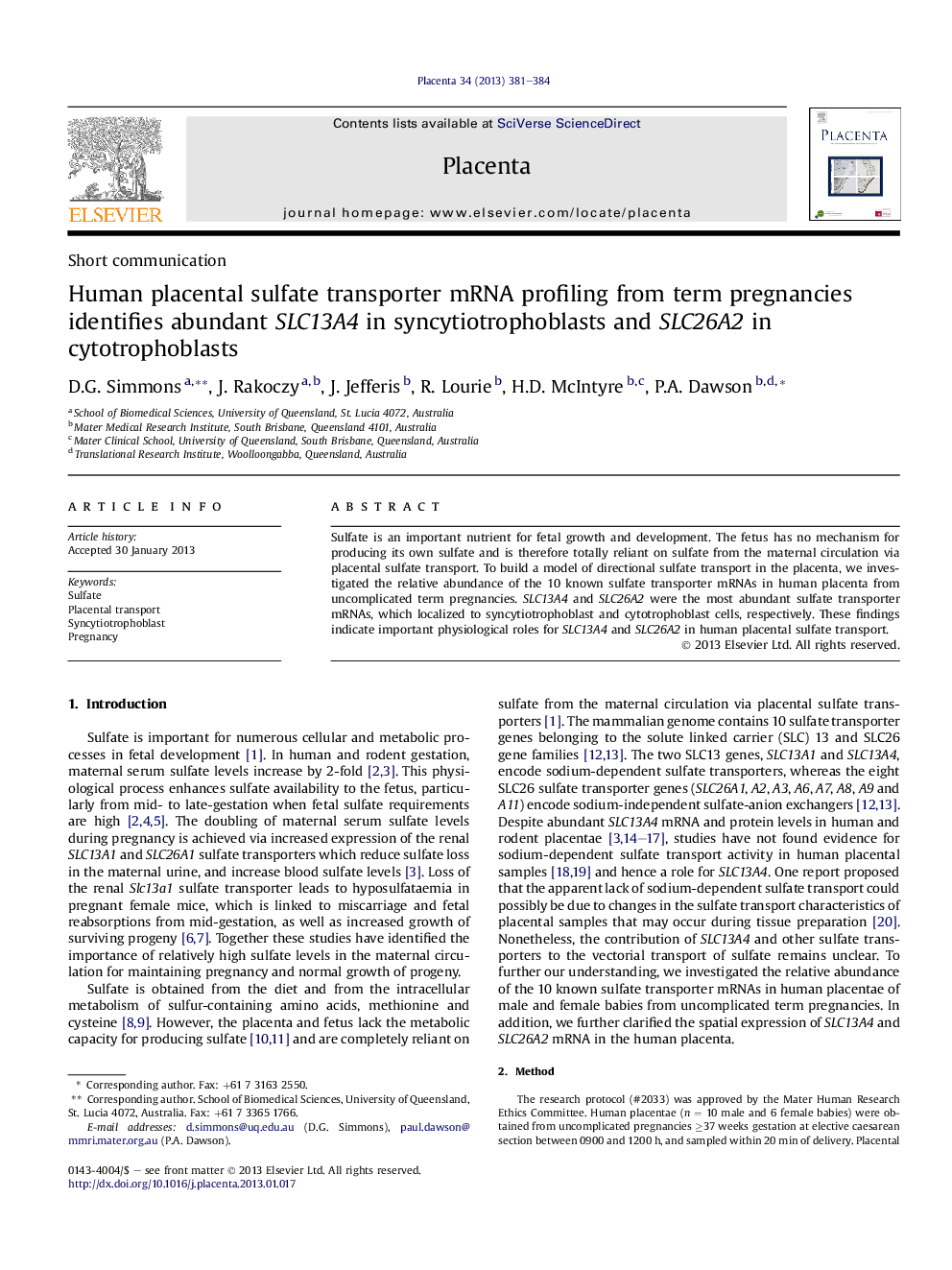| Article ID | Journal | Published Year | Pages | File Type |
|---|---|---|---|---|
| 2789119 | Placenta | 2013 | 4 Pages |
Abstract
Sulfate is an important nutrient for fetal growth and development. The fetus has no mechanism for producing its own sulfate and is therefore totally reliant on sulfate from the maternal circulation via placental sulfate transport. To build a model of directional sulfate transport in the placenta, we investigated the relative abundance of the 10 known sulfate transporter mRNAs in human placenta from uncomplicated term pregnancies. SLC13A4 and SLC26A2 were the most abundant sulfate transporter mRNAs, which localized to syncytiotrophoblast and cytotrophoblast cells, respectively. These findings indicate important physiological roles for SLC13A4 and SLC26A2 in human placental sulfate transport.
Related Topics
Life Sciences
Biochemistry, Genetics and Molecular Biology
Developmental Biology
Authors
D.G. Simmons, J. Rakoczy, J. Jefferis, R. Lourie, H.D. McIntyre, P.A. Dawson,
